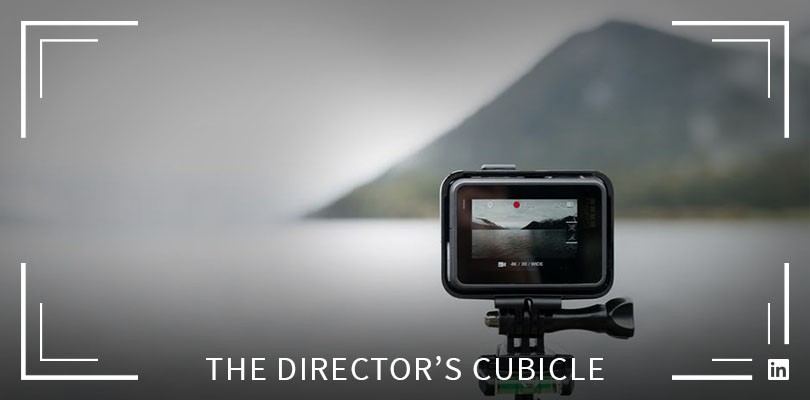6 Types of B2B Video and When to Use Them
Most B2B organizations recognize that video needs to have a place in their marketing strategies. A study released last year found that 90% of companies felt video content was becoming more important, and 93% reported having some level of video creation capability in-house.
However, possessing the desire and resources to create B2B video is only the beginning. The real work starts when it comes time to ideate and execute.
So, what kind of B2B video should you produce?
Types of B2B Video Content
There are a number of common types of B2B video that marketers find success with. As is often the case, the “which” is mostly dependent on the “why.” Let’s take a look at some different forms of B2B video content, with an eye on situations where it makes sense to use each one.
Webinar
This term itself encompasses a variety of different formats, but generally a webinar is a live and often interactive session where viewers can become participants. Because of this, webinars are among the most engaging forms of video marketing. They also serve as a lead generation engine if you include a data capture at signup. Plus, you can promote your webinar on LinkedIn to boost visibility and attendance.
When Should You Use a Video Webinar?
When you’re covering a topic where audience participation is essential. Because webinars often require attendees to set aside a specific time in their schedule, you’ll really want to make sure you have a strong draw. Carving even 15 to 30 minutes out of someone’s busy workday is a big ask, and an even bigger one if you’re asking for their contact info, so make sure you’re making it worth their while with a clear value proposition.
Example (via Wishpond):
Use a webinar when you want audience participation.
Interview/Q&A
It’s as simple as it sounds. Usually, these types of B2B videos are no more than filmed conversations involving at least one respected industry authority. The back-and-forth dynamic and deeper exploration of topics can make this type of content very compelling for viewers. And if you’re able to involve an influencer with a significant following in your niche, you can leverage their network for targeted reach.
When Should You Use a Video Interview or Q&A?
Any time you’ve got willing participants and a subject worthy of discussion, an interview video makes sense. Many companies will create this type of content while at an event, taking advantage of the numerous high-profile attendees. It’s also a popular format for recurring series.
Example (via TopRank Marketing):
Use a Q&A video when you have a respected industry authority and a topic valuable to your audience.
Storytelling
Narrative and storytelling can be extremely powerful tools. As Ann Handley puts it: “Stories surprise and delight us. They put flesh on the dry bones of data. They add narrative to your messages and presentations, making them memorable. Stories give your business-to-business ‘solutions’ a heartbeat and a pulse.” A storytelling video can be as simple as a person telling an anecdote to the camera, or as complex as a carefully conceived, shot, and edited production.
When Should You Use Video Storytelling?
If you or your business has a tale that you think is worth telling, and will provide value to viewers, try filming it rather than typing it. True stories tend to be relatable, and provide the opportunity to infuse your B2B video with emotional elements like drama and humor. But if you want to keep people watching, it’s important not to veer to far into self-promotion. (“Here’s a great thing we did!”) Lockheed Martin hits the right note in the example below.
Example (via Lockheed Martin):
Use a storytelling video if your message or product needs humanizing.
Testimonial
Customer success stories can be among the most powerful forms of B2B video content. These enable your company to demonstrate the value of your solution while allowing satisfied users do the talking. When viewers can actually see and hear fellow professionals sharing their experiences, there’s an authenticity that simply cannot be matched.
When Should You Use Video Testimonials?
When you’ve got a bona fide raving fan as a client or customer. A raving fan, according to Ken Blanchard who authored a book with the title, is “a customer who is so devoted to your products and services that they wouldn't dream of taking their business elsewhere and will sing from the rooftops about just how good you are.” If you have a customer or client like this, they’re more likely to be willing to participate in the creation of a testimonial video, and their genuine happiness will be evident. Make sure that the problem you’ve helped them solve is a prevalent and identifiable one for your customer base.
Example (via Slack):
Use a testimonial video when you’ve got a bona fide raving fan as a customer.
Instructional
How-to videos are among the most sought-out forms of video content for professionals and consumers alike. When you need to learn how to do something, there’s nothing quite like seeing it demonstrated in step-by-step fashion.
When Should You Use Instructional Videos?
One common usage is showing people how to use a product or solution, but this will generally be more valuable to those who are already customers, or at least already interested. It’s not as likely to attract new business unless there’s an interesting angle (e.g., “Here’s how you can set up our software solution for a new employee and have them rolling in less than two minutes”). Oftentimes, the best bet is to show your audience how to do something that will help them at their jobs, but isn’t outright promotional. For instance, a financial software company could create a video on the three best ways to easily track business expenses, with a closing CTA inviting them to contact your company and learn more. Or, you could package up one truly slick feature from your solution into a very quick explainer that will resonate, as Unroll.me did by highlighting its one-swipe email unsubscribe function here.
Example (via Unroll.me):
Use a how-to video when you want to show your audience how to do something that will help them at their jobs.
Showcase
Your employees, your office, your culture – whatever you want to showcase, B2B video presents an engaging visual method for doing so.
When Should You Use Video Showcases?
Company events and outings are great opportunities to take footage and then edit it together for a glimpse into your organization’s inner workings and personalities. This can be helpful for both attracting business and new talent. You could also showcase your product or service, but you’ll want to find a creative or quirky twist, otherwise it might just turn out as an ad rather than content marketing.
Example (via Moz):
Use a showcase video when you want to spotlight your employees, your office, or your culture.
Ready to enter the world of B2B video, or expand your existing horizons? Each of the types listed above can be highly effective components of a stellar B2B marketing strategy. It’s all about knowing when, and why, to use them.
For more tips on maximizing your B2B video marketing results, subscribe to the LinkedIn Marketing Solutions blog as we cover this topic from every angle.
Related articles







